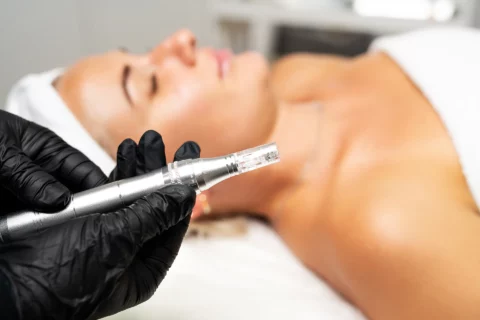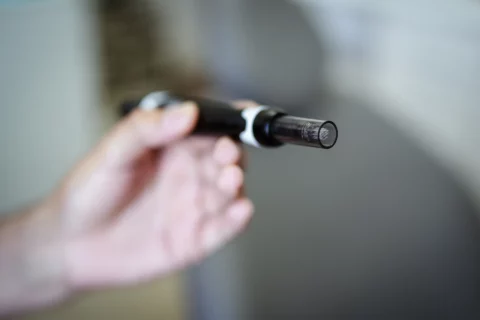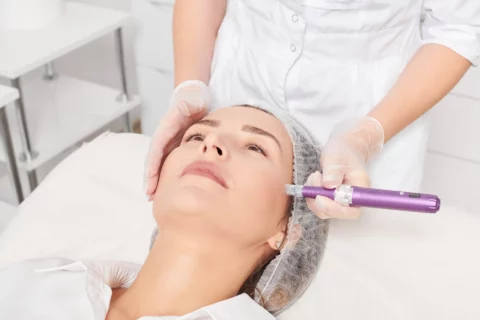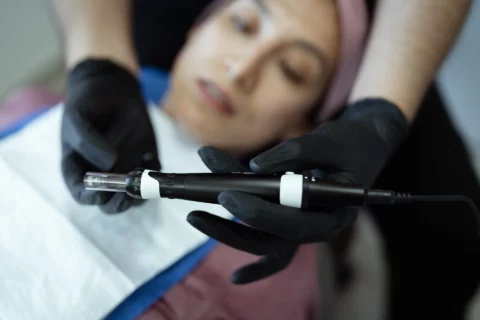Microneedling effectively treats acne scars, wrinkles, and hyperpigmentation by creating tiny punctures that stimulate collagen production and enhance product absorption. For best results, customize needle depth for each condition and use targeted serums during treatment.
Microneedling has revolutionized the aesthetic industry with its remarkable ability to address multiple skin concerns through a single treatment modality. This minimally invasive procedure harnesses the skin’s innate healing mechanisms to tackle stubborn issues like acne scarring, fine lines, and uneven pigmentation.
As professionals in aesthetic medicine continuously seek effective solutions for their clients, understanding the precise application of microneedling technologies becomes essential for optimal results.
What Is Microneedling and How Does It Work?
At its core, microneedling involves creating controlled micro-injuries to the skin using fine needles. Modern microneedling pens, such as the Dr. Pen series, deliver these precise micro-punctures through automated, vertically-oriented needle cartridges.
The advanced technology in these devices ensures consistent needle penetration depth and pattern. These tiny punctures trigger the skin’s natural wound-healing cascade, stimulating fibroblast activity and collagen production. The process, known as collagen induction therapy, effectively remodels existing tissue while generating new collagen and elastin fibers.
Unlike more aggressive ablative resurfacing procedures, microneedling with professional-grade pens largely preserves the epidermis while targeting the deeper dermis layer where regeneration occurs, minimizing compromise to the skin’s protective barrier.
This strategic approach minimizes downtime while maximizing cellular renewal, making it an increasingly popular option for clients seeking noticeable improvements without extended recovery periods.
Why Microneedling Has Become a Go-To Treatment
The versatility of microneedling has positioned it as a cornerstone treatment in aesthetic practices. Professional microneedling pens offer superior control and precision compared to traditional rollers, allowing practitioners to address multiple concerns simultaneously—from textural irregularities to tone discrepancies—making treatments exceptionally efficient.
The interchangeable needle cartridges (e.g., various pin configurations or nano-needles) available with professional systems like Dr. Pen also enable customization based on treatment goals, from delicate areas to broader coverage.
Furthermore, microneedling is suitable for nearly all skin types and tones, avoiding the hyperpigmentation risks associated with certain laser procedures on darker skin. The controlled, mechanical action of these professional pens eliminates the heat-related complications often seen with energy-based devices, making them a safer option for diverse clientele.
Precision Targeting: Addressing Specific Skin Concerns

Effectively Reducing Acne Scars Through Microneedling
Acne scarring presents a significant challenge due to its varying morphologies. Microneedling excels in treating different scar types through specific mechanisms:
For depressed scars (ice pick, boxcar, and rolling scars), the procedure breaks down fibrous scar tissue while encouraging new collagen formation. This dual action gradually elevates depressed areas, creating a smoother surface texture. The controlled injury also softens the rigid collagen structures that characterize most acne scars, allowing for more natural tissue remodeling.
Studies suggest patients may experience approximately 50-75% improvement in scar depth and visibility over a complete treatment series, though results vary based on individual factors including scar type, depth, and treatment protocol adherence.
Diminishing Wrinkles and Fine Lines
As skin ages, collagen and elastin production naturally decline, leading to visible lines and reduced elasticity. Microneedling effectively counteracts these changes through strategic stimulation of fibroblast activity.
For fine lines, the micro-injuries activate immediate healing responses that increase circulation and cellular turnover. With deeper wrinkles, the enhanced collagen and elastin production gradually fills depressions from within, providing natural-looking volume.
The procedure is particularly effective for perioral lines, crow’s feet, and forehead wrinkles—areas where controlled precision is crucial for optimal results.
Addressing Hyperpigmentation and Uneven Skin Tone
Hyperpigmentation occurs when melanin concentrates irregularly in the skin, creating dark spots and patches. Microneedling addresses this through multiple mechanisms:
- Accelerated cellular turnover helps shed pigmented cells from the surface.
- The micro-channels significantly enhance the penetration and efficacy of brightening ingredients.
- The renewed collagen matrix improves overall skin clarity and luminosity.
For stubborn conditions like melasma, post-inflammatory hyperpigmentation, and sun damage, combining microneedling with appropriate topical agents creates a synergistic effect that traditional topical applications alone cannot achieve.
The Microneedling Pen Advantage: Superior Control and Results
Why Professional Pens Outperform Dermarollers
The evolution from traditional dermarollers to advanced microneedling pens represents a significant technological advancement. Professional-grade devices like the Dr. Pen systems offered by Face Med Store provide distinct advantages:
- Professional pens create precise vertical penetration rather than the angled entry of rollers, minimizing unnecessary trauma while maximizing treatment efficacy.
- The adjustable depth settings allow practitioners to customize treatments based on the treatment area, skin thickness, and specific concern—addressing superficial pigmentation with shallow penetration while targeting deeper scars with longer needles.
Additionally, the motorized action ensures consistent needle penetration and reduced treatment time, enhancing both client comfort and clinical outcomes.
Professional Treatment vs. At-Home Devices
While consumer-grade devices have proliferated, professional microneedling offers undeniable benefits, professional treatments utilize medical-grade equipment with superior needle quality and sterilization protocols, minimizing infection risks.
The depth capabilities (up to 2.5mm) far exceed at-home devices (typically limited to 0.5mm), allowing for treatment of deeper concerns like significant scarring. Perhaps most importantly, trained professionals can adjust techniques and protocols based on skin response, ensuring safe, effective treatment customization.
Your Microneedling Journey: What to Expect

Pain Management and Comfort Considerations
Most clients describe microneedling sensations as mild to moderate discomfort, varying by treatment depth and area. Professional treatments typically incorporate topical anesthetic application 20-30 minutes prior to the procedure, significantly reducing sensation. Many advanced microneedling pens also feature vibration technology that helps minimize discomfort through sensory distraction.
Timeline and Session Structure
A typical professional microneedling session lasts 45-60 minutes, including:
- Consultation and preparation (10-15 minutes)
- Numbing cream application (20-30 minutes)
- The actual microneedling procedure (15-30 minutes depending on treatment areas)
Most concerns require a series of 3-6 treatments spaced 4-6 weeks apart for optimal collagen induction, with maintenance sessions recommended every 6-12 months thereafter.
Results Timeline and Expectations
Clients often notice an immediate “glow” from increased circulation, but the substantial improvements develop gradually:
| Timeframe | Healing and Results |
| Days 1-3 | Initial redness and mild swelling subsides |
| Weeks 1-2 | Improved texture and tone become apparent |
| Months 1-3 | Progressive improvement as new collagen forms |
| Months 3-6 | Continued refinement and significant visible changes |
Post-Treatment Care: Optimizing Recovery and Results
Essential Aftercare Protocol
Proper post-treatment care significantly impacts both comfort and results:
For the first 24 hours, keep the skin clean using only lukewarm water and a gentle, non-foaming cleanser.
Apply recommended recovery products containing ingredients like hyaluronic acid, peptides, or growth factors to support healing.
Sun protection becomes absolutely critical—use broad-spectrum SPF 30+ and avoid direct sun exposure for at least one week.
Clients should wait at least 24 hours before applying makeup and 48-72 hours before resuming active skincare ingredients like retinoids or alpha hydroxy acids.
Activities to Avoid After Treatment
To prevent complications and optimize results, clients should avoid:
- Strenuous exercise or activities causing excessive sweating for 48-72 hours
- Swimming pools, hot tubs, and saunas for one week
- Alcohol consumption for 24 hours (which can increase bruising)
- Sun tanning or intense heat exposure for at least two weeks
Safety, Side Effects, and Candidacy
Safety Profile of Professional Microneedling
When performed by qualified professionals using proper protocols, microneedling has an excellent safety profile. The procedure avoids thermal damage, unlike many laser treatments, reducing recovery time and complication risks.
Common side effects include temporary redness, mild swelling, and skin sensitivity—typically resolving within 24-72 hours. Rare complications may include infection, prolonged redness, or post-inflammatory hyperpigmentation, most often resulting from improper technique or aftercare.
Ideal Candidates and Contraindications
Microneedling works well for most skin types and colors, particularly those seeking improvement in texture, tone, and overall rejuvenation. However, certain conditions warrant caution:
Treatment should be avoided in cases of active acne, rosacea flares, open wounds, recent sun exposure, or history of keloid scarring. Pregnant women should defer treatment until after delivery. Those with certain autoimmune conditions should consult their physician before pursuing treatment.
Enhanced Results Through Combination Approaches
Many professionals enhance microneedling results by incorporating complementary treatments:
- PRP (platelet-rich plasma) provides growth factors that accelerate healing and collagen production
- Specialized serums containing peptides, growth factors, or exosomes boost cellular communication
- Sequential treatments with other modalities like LED therapy further enhance overall skin quality
Conclusion

Microneedling’s versatility in addressing multiple skin concerns simultaneously makes it an invaluable tool in aesthetic medicine. By creating controlled micro-injuries, this innovative treatment leverages the body’s natural regenerative capabilities to improve texture, tone, and overall skin quality.
For aesthetic professionals seeking to provide comprehensive solutions, high-quality devices like the Dr. Pen series ensure precise treatment delivery. Meanwhile, complementary products and educational resources enhance both practitioner expertise and client outcomes.
As with all aesthetic procedures, successful microneedling requires proper training, quality equipment, and individualized treatment planning. By understanding the nuances of needle depth, treatment frequency, and targeted applications, practitioners can deliver transformative results for even the most challenging skin concerns.






